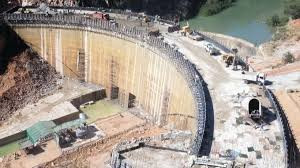
Casinos are not merely venues for gaming and leisure; they are masterpieces of psychological and design ingenuity aimed at enhancing player experience and maximising revenue. This article delves into the intricate world of casino design, exploring how spatial arrangements, ambiance, and aesthetic elements influence player behaviour, encouraging longer stays and increased spending. The strategies discussed here transcend the conventional boundaries of architecture, offering insights into the subtle manipulations that shape consumer psychology in the realm of gaming.
Casino Design Strategies: Tailoring Experiences Across Markets Regional Nuances in Casino LayoutsCasino designs vary significantly across regions, reflecting cultural preferences and legal regulations. In Asia, for instance, feng shui principles often guide the spatial arrangements, promoting a sense of harmony and flow that appeals to local players. In contrast, Western casinos might focus more on grandiosity and spectacle, with lavish decorations and sprawling game floors designed to evoke feelings of luxury and excitement.
Product-Specific Layouts and Their Impact The layout of a casino is meticulously planned to highlight certain games, based on their profitability and appeal. High-stakes table games like poker and blackjack are usually positioned in more secluded areas, creating an exclusive atmosphere that attracts serious gamblers. Slot machines, which are the bread and butter of many casinos due to their high house edge, are often placed in prominent, high-traffic areas to entice casual players and passersby. Strategic Use of Space to Influence Behaviour The strategic use of space within casinos is aimed at encouraging guests to linger longer and explore further. Maze-like layouts with winding paths and few straight sightlines create a sense of discovery, compelling visitors to venture deeper into the casino floor. This design philosophy minimizes the likelihood of a quick exit and maximizes engagement with various games and amenities. Success Cases in Casino Design In the realm of online gambling, players can explore top paying NZ online casinos to experience masterfully designed user interfaces that promote exciting user engagement so players can enjoy longer game times. By analysing user interaction data, these platforms have optimized their layouts to highlight the most popular games and incentivize exploration, demonstrating the power of design in the digital gambling space.Casino design is a complex, multidisciplinary endeavour that blends aesthetics, psychology, and technology to create environments that captivate and engage players.
Reinventing the Casino FloorOne notable success story comes from a casino that redesigned its floor layout to create more open spaces around popular games, leading to a significant increase in player engagement and overall revenue. This approach broke away from traditional dense layouts, proving that strategic openness can enhance player satisfaction.
Leveraging Technology for Personalised ExperiencesAnother success case involves the integration of technology to offer personalized gaming experiences. Through the use of loyalty cards and mobile apps, a casino was able to track player preferences and guide them towards games that matched their interests, resulting in higher player retention rates and increased spend per visit.
Goals Behind Casino Design Strategies Enhancing Player Comfort and Prolonging StayOne of the primary goals of casino design is to make players feel comfortable and welcome, encouraging them to stay longer and, consequently, spend more. This is achieved through ergonomic furniture, carefully controlled climate, and atmospheric elements like lighting and scent, which are all calibrated to reduce fatigue and create a pleasant, immersive environment.
Maximising Revenue Through Strategic Game PlacementThe deliberate placement of games is a tactic used by casinos to maximise revenue. High-yield games are strategically positioned to attract the most foot traffic, while offering a diverse array of gaming options ensures that there's something for every type of player, increasing the casino's overall profitability.
Creating a Seamless Gaming ExperienceA seamless transition between different gaming areas and the integration of various services within the casino are designed to create a holistic experience that discourages players from leaving. By offering a mix of dining, entertainment, and relaxation services alongside gaming, casinos create a self-contained ecosystem that meets all the visitor's needs in one place.
- Exploring the psychology of casino design: How layouts influence player behaviour
- AI: Benefits, concerns in the education sector
Keep Reading
Advanced analytics and artificial intelligence are increasingly being used to optimise casino layouts and game placement. These tools can analyse player behaviour patterns, identifying which games are most popular and which areas of the casino receive the most foot traffic, allowing for data-driven decisions that enhance player satisfaction and profitability.
The Role of Virtual Reality in Design PrototypingVirtual reality technology enables designers to create and test different casino layouts in a virtual environment before any physical changes are made. This allows for extensive experimentation with space, lighting, and game placement to determine what configurations most effectively influence player behaviour and enhance their gaming experience.
Best Practices in Digital SurveillanceDigital surveillance systems play a crucial role in casino management, offering insights into player movements and interactions with games. This information can be used to further refine the layout and game offerings, ensuring a safe and enjoyable environment for all guests.
The strategies and goals outlined in this article underscore the importance of design in shaping player experiences and driving casino profitability. As the industry evolves, the interplay between physical and digital spaces will continue to redefine the boundaries of casino design, offering ever more sophisticated ways to enchant and entertain players around the globe.






